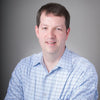To get your people working better as a team, you need to bridge the divide between the different groups in your firm.
Ben Lindbergh and Sam Miller were sports journalists and baseball statistics gurus who were offered an opportunity to run a professional minor league baseball team. Putting theory to practice, the pair hired a manager and assembled a complete roster of players who could hit, pitch, and field. The adventure is documented in their book titled The Only Rule Is It Has to Work.
In addition to forming a complete team, they knew that this team needed to work together – that there needed to be a certain “chemistry” between the players. But team chemistry wasn’t nearly as easy to quantify as batting average or strikeouts per inning. For help, they turned to the work and research done by Katerina Bezrukova, at the time an assistant professor at Santa Clara University.
She found that chemistry was a fairly simple math problem, and that predicting trouble was as easy as identifying what she called “fault lines.”
According to Bezrukova, “Fault lines are defined as hypothetical dividing lines that split a group into relatively homogeneous subgroups based on the group members’ demographic alignment along multiple attributes (adapted from Lau & Murnighan, 1998). For instance, a fault line exists in a science team when all the engineers in a team are fresh college graduates and all the scientists are just about to retire.”
Lindbergh and Miller likened fault lines to high school cliques: “If five friends all love cheerleading and five other friends all love marching band, then those 10 people are divided into two groups that don’t interact – there’s the fault line between them.” Fault lines intensify when group members are aligned around multiple attributes – when the marching band lovers are freshmen and the cheerleaders are juniors, for example.
Many AEC firms like to think of themselves as families, but they are – at their core – more like sports teams (and sometimes high schools!). For example, managers need to hire different people to fill distinct but complementary roles, these people need to work together to achieve an outcome, and there are competitors.
Fault lines develop in our firms, too. They are almost all organized around a hierarchy that maps closely with age – like the science teams that Berzrukov studied. Fault lines develop between the technical staff and administrative staff and between offices or departments or studios. What is a leader to do?
Continuing the high school analogy, Lindbergh and Miller offered a constructive way forward: “If a couple of students from each group are also into, say, running the school’s canned food drive, there is now a third, overlapping group. And if there’s a conflict between a cheerleader and a clarinetist, there are now networks for resolving it.”
Your chemistry assignment for the next week:
- Map out the fault lines in your organization and reflect for a moment on how they manifest themselves day-to-day.
- Identify the people who form the connective tissue across the fault lines. They play an important role in your firm.
- Get your canned food drives going. Go beyond superficial (but fun, and important) social gatherings and create opportunities for people on different sides of a fault line to interact on a meaningful level – to solve a specific problem or advance an initiative in your strategic plan.
Tom Godin is a strategic planning advisor at Zweig Group. Contact him at tgodin@zweiggroup.com.

